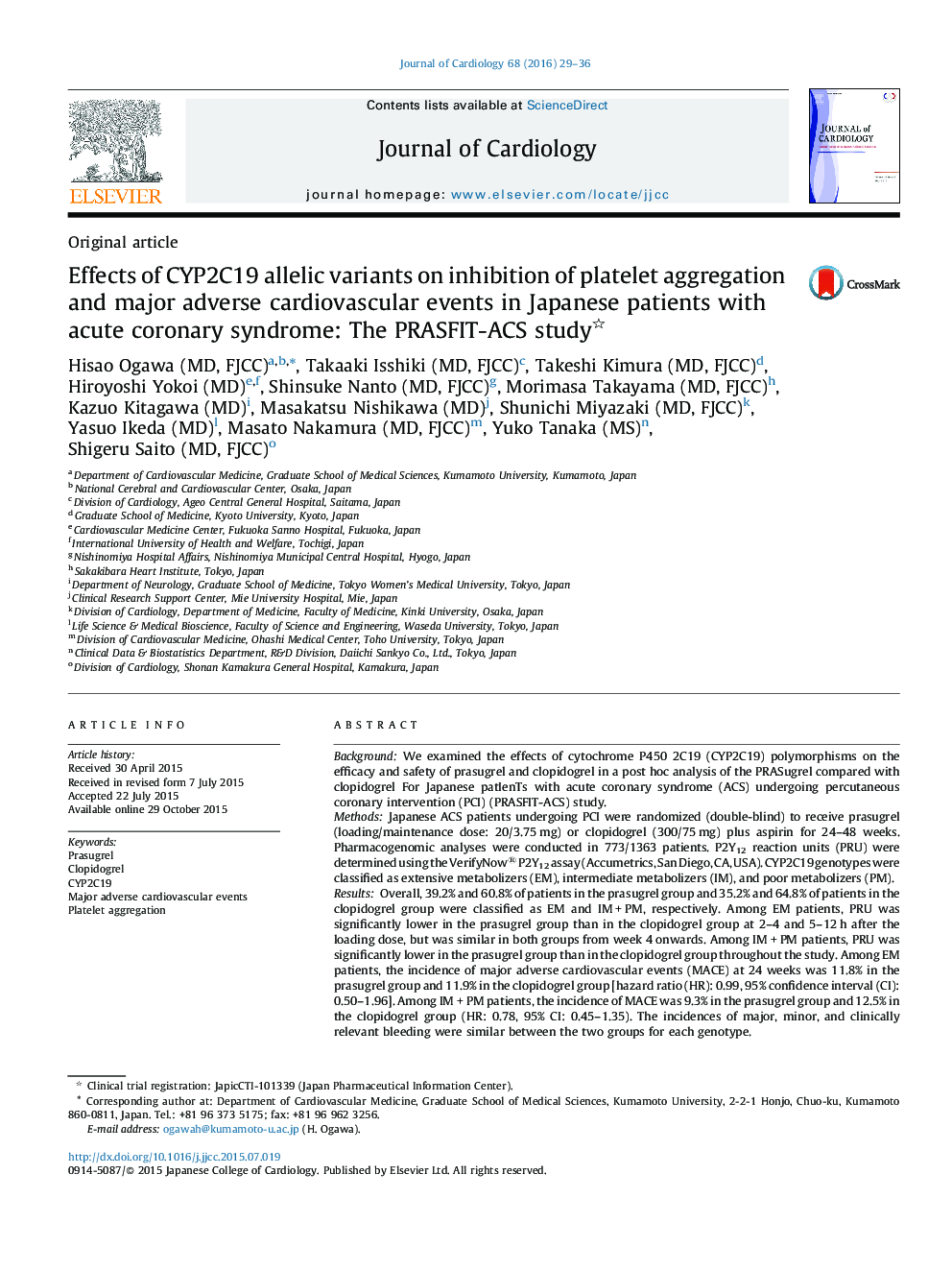| Article ID | Journal | Published Year | Pages | File Type |
|---|---|---|---|---|
| 2962752 | Journal of Cardiology | 2016 | 8 Pages |
BackgroundWe examined the effects of cytochrome P450 2C19 (CYP2C19) polymorphisms on the efficacy and safety of prasugrel and clopidogrel in a post hoc analysis of the PRASugrel compared with clopidogrel For Japanese patIenTs with acute coronary syndrome (ACS) undergoing percutaneous coronary intervention (PCI) (PRASFIT-ACS) study.MethodsJapanese ACS patients undergoing PCI were randomized (double-blind) to receive prasugrel (loading/maintenance dose: 20/3.75 mg) or clopidogrel (300/75 mg) plus aspirin for 24–48 weeks. Pharmacogenomic analyses were conducted in 773/1363 patients. P2Y12 reaction units (PRU) were determined using the VerifyNow® P2Y12 assay (Accumetrics, San Diego, CA, USA). CYP2C19 genotypes were classified as extensive metabolizers (EM), intermediate metabolizers (IM), and poor metabolizers (PM).ResultsOverall, 39.2% and 60.8% of patients in the prasugrel group and 35.2% and 64.8% of patients in the clopidogrel group were classified as EM and IM + PM, respectively. Among EM patients, PRU was significantly lower in the prasugrel group than in the clopidogrel group at 2–4 and 5–12 h after the loading dose, but was similar in both groups from week 4 onwards. Among IM + PM patients, PRU was significantly lower in the prasugrel group than in the clopidogrel group throughout the study. Among EM patients, the incidence of major adverse cardiovascular events (MACE) at 24 weeks was 11.8% in the prasugrel group and 11.9% in the clopidogrel group [hazard ratio (HR): 0.99, 95% confidence interval (CI): 0.50–1.96]. Among IM + PM patients, the incidence of MACE was 9.3% in the prasugrel group and 12.5% in the clopidogrel group (HR: 0.78, 95% CI: 0.45–1.35). The incidences of major, minor, and clinically relevant bleeding were similar between the two groups for each genotype.ConclusionsPrasugrel showed more consistent antiplatelet effects than clopidogrel in Japanese ACS patients irrespective of the CYP2C19 phenotype.
